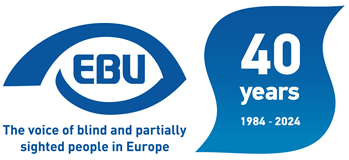
"Bridging the Gap between Museums and Individuals with Visual Impairments” (BaGMIVI) is a 3-year European project started in September 2014 and coordinated by the University of Thessaly in Greece. Co-funded by the Erasmus+ Programme of the European Union, its main objectives are:
- to enable the museum members become aware and update their knowledge regarding the barriers that impede the access of visitors with visual impairments to museums,
- to create learning, cultural and social opportunities for individuals with visual impairments,
- to promote the collaboration between museums, schools and associations of individuals with visual impairments and
- to point out the best practices and guidelines for the development of an accessible and inclusive museum for visitors with visual impairments.
The consortium consists of twelve formal and four silent partners: universities, museums, associations for the blind, NGOs and educational settings. All partners, including EBU and ICEVI-Europe, collaborate to shape a networking with activities at many levels: preliminary, vertical and horizontal.
Up to now, 3 intellectual outputs have been completed:
- O1: A needs assessment study regarding the level of access and inclusion of individuals with visual impairments to the museums. The needs assessment study was based on a literature review and on a research in order to investigate the level of access and inclusion of individuals with visual impairments to the museums
- O2: A joint syllabus for the training of the museum staff which was based on the needs assessment study. The joint syllabus was developed for the training of the staff from the participating museums but it may be used in the future by other museums
- O4: Training courses for the staff of the participating museums in the BaGMIVI project. These training events were very important for the participating museums and galleries in order to develop differentiated and accessible museum programmes
The project is also currently testing differentiated and accessible material of all participating museums in order to enhance the access and inclusion of individuals with visual impairments during their museum visits. A best practice guide on differentiated museum content will then be put together, based on visitors' and museum staff's feedback.
The originality of BaGMIVI project lies in its synthetic character which combines the contemporary role of the museums, the socio-anthropological paradigm for disability and the influence of many political and social movements of people with disabilities as well as many documents regarding the rights of people with disabilities and human rights in general. As a result, it fully supports the social agenda of the European Union on non-discrimination, equal opportunities of individuals with visual disabilities through the “cultural gates” of the museums and galleries. Another characteristic constitutes the development and validation of methodologies, workshops and patterns of collaboration among museums, associations of the blind, NGOs, IT Companies, universities and schools for the blind for the exploitation of appropriate differentiated museum content.
Furthermore, the innovation of this project can be justified by the production of the aforementioned outputs that may be used as Open Educational Resources. Also, the best practices guide will include innovative features in the sense of introducing recommendations into how to convert a visual image (e.g. a painting) into a tactile form based on the principles of differentiation and design for all.
It is expected that the above results will have an impact at personal, education, museum and societal level and will contribute to the inclusive character of museums and to equal educational, cultural and social opportunities for all people including those with visual impairments.
For more information, please visit the BaGMIVI website

